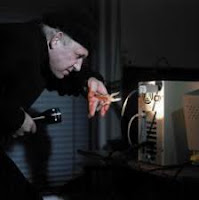WHAT IS COMPUTER SECURITY RISK?
MALWARE/ MALICIOUS CODE
Information transmitted over networks has a higher degree of security risk than information kept on an organization’s premises
Internet and network attacks that are exposed to security include :
(a) Malware / Malicious Code
Malware is malicious software, which are programs that act without a user’s knowledge and deliberately /purposely alter the computer’s operations.
Types of Malware :
*Computer viruses
*Worms
*Trojan Horses
Symptoms of Malware / Malicious Code
- Operating system runs much slower than usual
- Available memory is less than expected
- Files become corrupted
- Screen displays unusual message or image
- Music or unusual sound plays randomly
- Existing programs and files disappear
- Programs or files do not work properly
- Unknown programs or files mysteriously appear
- System properties change
- Operating system does not start up
- Operating system shuts down unexpectedly
Computer Viruses
A potentially damaging program that affects, or infects a computer or mobile device negatively by altering the way the computer or device works without the user's knowledge or permission.
Once the virus infects the computer, it can spread throughout and may damage files and system software, including the operating system.
Worms
A program that copies itself repeatedly, for example in memory, using up resources and possibly shutting down the computer, device or network.
Trojan Horses
A program that hides within or looks like a legitimate program. Unlike a virus or worm, a trojan horse does not replicate itself to other computers or device.
It usually appears to be a game or utility program.
Cannot replicate themselves; must be downloaded and installed.
2. Unauthorized Access and Use
Unauthorized Access is the use of a computer, network,
without permission.
Unauthorized Use is the use of a computer,
or its data for unapproved or possibly illegal activities.
Examples of Unauthorized Access
- A company’s clerk is using her employer’s personal computer without the employer’s knowledge.
- An employee from the sales department has tried to gain access to the computer network system using the system administrator password.
Examples of Unauthorized Use
- An employee using an organization's computer to send a personal e-mail messages.
- An employee using the organization’s word processing software to complete herson’s science project.
- Someone gaining access on a bank computer and performing an unauthorized transfer.
Hardware Theft and Vandalism
Hardware theft is the act of stealing computer equipment.
Hardware vandalism is the act of defacing or destroying computer equipment
Hardware theft occurs when hardware is stolen from an individual or from a business, school, or other organization.
Examples of Hardware Vandalism
Hardware vandalism occurs when an individual breaks into a business or school computer lab and aimlessly smashing the computers.
4. Software Theft
Software theft occurs when someone:
(i) Steals software media
(ii) Intentionally erases
programs
(iii) Illegally copies a program
(iv) Illegally registers and/or activates a program
5. Information Theft
Information theft occurs when someone steals personal or confidential information.
Obtaining enough information about an individual to perform fraudulent financial transaction is often related to identity theft.
Identity theft is using someone else’s identity:
(a) to purchase goods or services
(b) to obtain new credit cards or bank loans
(c) illegally pretend to be as that individual
Techniques of Information Theft
- Phishing is the use of spoofed e-mail messages to gain credit card numbers and other personal data to be used for fraudulent purposes
- Pharming is use of spoofed domain names to obtain personal information to be used in fraudulent activities.
System Failure - Causes
- Aging Hardware
- Natural Disaster (fires, floods, hurricanes
- Electrical Power Variation (Noise, Under voltage, Over voltage)
- Errors in Computer Programs













No comments:
Post a Comment